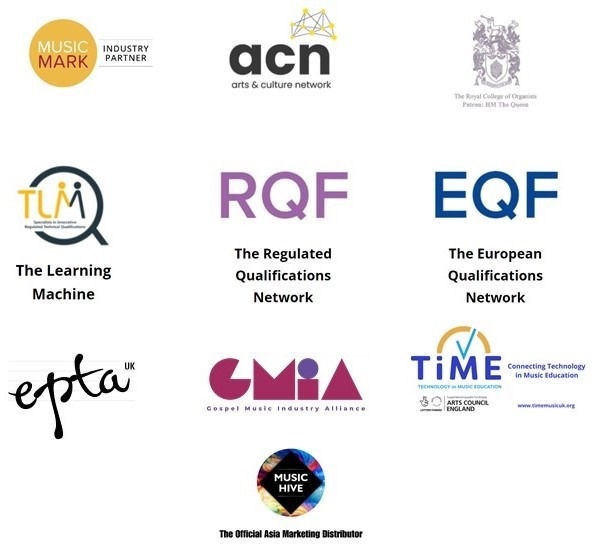Advanced Aural Training Online has really become a specialism for me and there is a huge demand, worldwide, but so many advanced performers have not discovered how it can transform their performances yet. Taking aural training way beyond examinations and transforming the most advanced performances is a speciality of mine and I love it, the transformations are exhilarating. Fascinatingly, it’s not only possible, but in some ways even better, online than in-person. In recent weeks I’ve had students as far away as Hong-Kong learning with me and I’ve taught groups at different levels for the Royal College of Organists, as well as some Heads of Music at independent schools. Oxford and Cambridge Choral Awards scholars frequently arrive at the beginning of term with wonderful voices and experience in great choirs, but they lack sight-singing ability and a more comprehensive, in-depth musicianship skill – they don’t “sing with understanding”. This year, Routledge published a chapter that I wrote in the Routledge Companion to Aural Skills Pedagogy Before, In, and Beyond Higher Education. Here, I take thoughts to an even higher level.

Advanced Aural Training – from Ear to Exquisite Performer
The Kodaly “Method” and Limitations
The Kodaly advanced aural training practititioner’s concept of aural training includes rhythmic syllables and solfege (although many other methods include these too it should be pointed out) as one part of its philosophy. However, we need joined up thinking. The majority of traditional practitioners or courses are not producing bespoke courses to the individual or joining up the exercises with the work on the person’s voice or instrument (piano/organ). Just as a choir director, a singing teacher or vocal coach should produce exercises that connect with repertoire (rather than simply singing up and down scales), so should the aural teacher.
Advanced Aural Lessons and Rhythm
In the Royal College of Organists advanced aural classes that I led online, I focused specifically on skills that are common challenges to organists: contrapuntal music and coordination between hands and feet. To simply summarise, multi-tasking is a huge element of organ playing both in repertoire and mechanics/technique.
All rhythm exercises should be adapted to the instrument. An organist should be applying them to hands and feet with different actions simultaneously.
A jazz vocalist or singer should be adapting them with phrasing. Have you listened to “One for my Baby” by Ella Fitzgerald and counted the beats to find where she starts her rhythmic phrases? Frequently, before the bar-line. This is interesting because ‘back phrasing’ usually occurs later in the bar rather than preceding main beats. This is where advanced aural training needs (a) listening to identify what is happening in the ‘real world’ rather than a ‘method’ and (b) needs exercises adapting accordingly.
Advanced Aural Lessons and Pitch
The beauty of being online is that nobody can hear anybody else in advanced aural classes with groups. That means that the typical choir scenario of singing slightly behind your neighbour to check that your note matches theirs is impossible. There can be no “leaders and followers”, but rather everybody leads themselves.
The idea that simply singing solfege constitutes aural training is missing the point. Firstly, the sound needs to be self-generated. So if a teacher is singing and others are copying, the pitch isn’t self-generated and the student is doing little different to hearing a song on the radio and singing it back, other than naming the pitches. The primary element of aural training should be ‘inner hearing’, training the student to hear sounds accurately in their mind because tasks such as sight-singing really require this.
Secondly, singing up and down the pentatonic scale with certain patterns and interconnecting with simple songs is not an aural training method, it’s a great beginning, but nothing more. I’ve been connecting my teaching with my Hindustani Classical Singing training that I’ve been having online with a guru in Sri Lanka. What have I learned? Oh, so much! I have approached my training with ragas connected to specific scales and then used Hindustani pitch exercises that increase in difficulty exploring specific patterns. In other words, there are increasing levels of difficulty via different patterns, there are then pieces (“compositions” as my guru calls them) and then there is improvisation. How many people develop full-on improvisation in advanced aural-training sessions? Not many? Why? Is this not the ultimate in self-generated sound and inner-hearing? Transfer it to the piano/organ or other instruments too.
What about popular music? How many of Beyonce’s licks and runs are pentatonic? Are they easy like a simple nursery-rhyme style song taught in many Kodaly courses? Absolutely not. The next level is clearly to connect patterns with “real repertoire”. In the pop singing world this means looking to the likes of Whitney Houston, Beyonce, Celine Dion, even Marvin Gaye. Have you ever listened closely enough to Marvin Gaye’s Blues notes to realise that they are somewhere in between minor and major intervals, often forming quarter tones? In classical, there’s a wealth of great composers with material using different scales and a ‘classical fake book’ is a perfect resource for famous melodies.
Advanced Aural Training and Harmony
So we have discovered that even singing the pentatonic scale is not necessarily straight-forward. Now we come to two or more notes at the same time. For pianists and organists in particular, this relates to counterpoint. For pop vocalists and jazz singers, this can be to do with connect the horizontal with the vertical: improvising melodies (horizontal) over a chord progression (chords being vertical).
Aural training for Cadences
There are so many strategies for developing this it is unbelievable. For instance, taking a harmonic reduction of a piece (pop, classical, jazz makes no difference) and singing the cadences with the roots of the chords while playing the melody. Two parts at once – if you can play one and sing another, your brain moves to a new level with regards to hearing two things simultaneously. Were you taught cadences as a theory exercise on a piece of paper with numbers? Forget that – you have no ‘real’ understanding of how they ‘sound’ and music is an aural art form.
Advanced Aural Training and Chord Progressions
What about the 12 bar blues (or any progression classical, pop, jazz for that matter – iib-V-I, circle of 5ths etc)? Can you sing just the roots of the progression perhaps while your piece is playing on youtube (you can click the little ‘cog’ for settings and slow the track down to help)? Can you then locate the third of each chord? In other words, can you tune your ears into notes of a chord? If you can and you are a singer or vocalist, then you can (a) sing in tune with the accompaniment and (b) improvise and know which notes will sound ‘good’.
Advanced Aural Training, Instant Canons and Counterpoint
These aspects are all part of harmony, or, more importantly, hearing more than one thing at once. I’ve presented the idea that they are particularly useful for pianists and organists. Have choir directors ever considered how important they are for choral awards singers? The ability to listen to other voice parts at the same time as yours is crucial for advanced intonation (tuning). Singing is often perceived and taught as ‘melody’ without regard for the rest of the ensemble. The chord progressions mentioned above are one step towards interconnecting melodic line with simultaneous musical events. Advanced musicians not only ‘hear’ their own parts, but they need to fully understand the parts of others to provide the most expressive and cohesive ensemble and performance.
Aural Training and Modulations
A common challenge for many in an aural test is identifying where a piece has changed key and which key it has moved to, termed “modulation”. I have recently been teaching a lot of this. The concept of the supertonic (2nd note) of a previous scale becoming the dominant (5th) of the new scale is straight-forward enough on a piece of paper, but the ability to “sing a D”, then hear it as the 2nd degree of C Major, and next hear it as the 5th degree of G Major is a different situation altogether. To sing CDEFGFED, and then change to DEF#G to ‘modulate’ really refines your concept of tuning and for some people plays quite some mind games. However, vocalising the change of key helps you ‘feel’ where the key is ‘pulled’ or ‘pushed’, developing an ear for detail: advanced aural training.
Advanced Aural Training and Sight-Singing
Is sight-singing that important? Why can’t I just play the melody on the piano to check how it sounds? Well, for very good reason (apart from the fact that acoustic pianos never stay perfectly in tune!). The ability to see notation as a ‘representation of sound’ is the beginning to respect music as an aural art form. It allows you to imagine how the composer wanted the piece to sound and then re-create the piece in your mind, prior to performing it with your voice, piano, organ or other instrument.
Advanced Aural Training, Musicianship and Theory
I am afraid that my perspective of ABRSM theory exams and the like is not that they are bad in themselves, but that they are frequently taught as ‘paperwork’ exercises in order to jump through hoops. Theory is related to sound and to fully understand theory you need to ‘use it’ with your voice and instrument. By using it, you connect the concept with the sound and you develop a ‘real world’ understanding. A practical use of key concepts makes for a great musician. Undoubtedly, for singers, some of these concepts are harder because they are not playing chords and chord progressions at the piano, but if they were to understand the chords, keys, scales and chord progressions etc through their repertoire and what they were already performing, then they would be on to a winner. They are already doing it, but their teachers are not showing them. Have you learned theory because it’s something you “have to do” or have you learned it because it makes you a more informed and therefore better performer?
Connect aural with your repertoire, then develop theory through your repertoire too. The result? A complete, fully understood, in-depth, connected performance. How? A good teacher then takes the aural and theory and helps you make an informed performance. Do you dwell for slightly longer on your German 6th chord? Do you treat an interrupted cadence as a deceptive cadence and understand how it ‘tricks’ the listener? Do you slightly hold back at a significant modulation or structural point? Is there a hierarchy of structural columns within your piece thanks to your in-depth understanding?
Aural Lessons Strategy and Analysing Student Needs
I have had a number of students come for aural lessons recently who have had prior aural training experience. However, their specific needs have not been identified. Teachers have often been trained to implement the likes of Kodaly training through courses and certificates, so they teach the way they have been taught to. This is not the best teaching, this is the blanket application of a concept with no analysis of the individual. In initial lessons, teachers need to try a range of activities to discover where the student challenges are and then create a series of further activities that hone in on the specific weaknesses. A course is then created that is bespoke to that person’s strengths and weaknesses.
Aural Lessons and Recordings
“I can’t possibly train singing in rounds at home, I don’t live with the Von Trapp family!” The Von Trapp family, however, didn’t have mobile phones. Now there’s your answer – record one part on your phone and sing the other over the top.
Advanced Aural Lessons for Advanced Performance
Beyond that, do you use youtube? How often do you listen to short snippets of professional recordings? Ever tried comparing one phrase by a professional with that of another? Advanced aural skills allow you to do this. Just how much does Marvin Gaye phrase before or after the beat? Are Peggy Lee’s blues notes exactly a minor third, or are they half way between a minor third and a major third? Is a crotchet (quarter note) played on the first beat of the bar actually sounded for the same length as one on the third beat? Now this is where advanced aural lessons become really interesting and I absolutely love teaching at this level, connecting it with repertoire and performance. Students who come for these kind of lessons experience a different level of teaching, learning and performance altogether.
Choral Award Scholars and Choirs
Can you imagine a choir who can all see printed music and know how it sounds? Can you imagine a choir who not only inner hear (hear in their heads) their own part, but also the parts of others at the same time? Can you imagine a choir who all ‘feel’ the chord progressions, sense the cadences and shape (dynamics) the phrases according to the harmonic progressions? What about a choir who then connect the meaning of the text with the quality of their vocal tone? Now that’s a topic for a whole new article.
Music Lessons Online or Face-to-Face in-Person
(Yarm, Teesside, UK)
If you would like to travel the journey with me, I would love to be your guide! Dr Robin Harrison PhD BMus(Hons)/GradRNCM FNCM ARCO LTCL DipLCM PGCE(QTS)
Aural, Musicianship, Sight-Singing www.the-maestro-online.com/aural-musicianship-theory
Classical Piano www.the-maestro-online.com/piano
Jazz Piano www.the-maestro-online.com/jazz-piano-lessons
Rock Pop Piano www.the-maestro-online.com/pianolanding
Classical Singing www.the-maestro-online.com/singing
Musical Theatre www.the-maestro-online.com/musical-theatre-singing-lessons
Pop Vocals www.the-maestro-online.com/popvocals
Beginner organ www.the-maestro-online.com/organgsta
Advanced Organ www.the-maestro-online.com/organ
Subscribe Today
For 1-1 music lessons (Zoom or in-person) visit The Maestro Online Calendar
Additional Membership Benefits
- Zoom support (there’s a human you can interactive with behind this platform!)
Additional Membership Benefits
- 3 months free membership of the Arts & Cultural Network (worth £45).
Additional Membership Benefits
- 1 months free UK piano hire and free delivery from Musiq Group with a 12 month contract.
Additional Membership Benefits
- You are also supporting The Maestro Online charitable outreach – bringing music education to regions and countries where such resources are difficult to find.
All Courses
Far cheaper than 1-1 lessons + a great add-on-
Annual: £195.99
-
All Piano Courses
-
All Organ Courses
-
All Singing Courses
-
All Guitar Courses
All Courses + Masterclasses + Exam Practice Toolkits
Best value-
Over £2000 total value
-
Annual: £299.99
-
All Masterclasses
-
All Exam Practice Toolkits
-
All Piano Courses
-
All Organ Courses
-
All Singing Courses
-
All Guitar Courses
All Courses + Masterclasses Exam Practice Toolkits
+ 1 hour 1-1 Lesson-
Monthly 1hr Lesson
-
All Exam Practice Toolkits
-
All Masterclasses
-
All Piano Courses
-
All Organ Courses
-
All Singing Courses
-
All Guitar Courses



